GDP growth hits 2-year high: Here is what experts have to say

KV Prasad Jun 13, 2022, 06:35 AM IST (Published)
 Listen to the Article (6 Minutes)
Listen to the Article (6 Minutes)
Summary
Growth engines are firing once again and the economy is off to a flying start in the new financial year. Gross Domestic Product (GDP) growth rate has hit the magic number of 8.2 percent in the April-June quarter. This is the highest in the last two years. There was some impact of the low base …
Continue reading “GDP growth hits 2-year high: Here is what experts have to say”
Growth engines are firing once again and the economy is off to a flying start in the new financial year.
Gross Domestic Product (GDP) growth rate has hit the magic number of 8.2 percent in the April-June quarter. This is the highest in the last two years. There was some impact of the low base because growth in the first quarter last year was at a modest 5.7 percent thanks to demonetisation and GST rollout. Nonetheless, 8.2 percent is much better than what the street was expecting.
The economy also fired on all cylinders – agriculture growth was at 5.3 percent, manufacturing was at a robust 13.5 percent, and construction growth was at 8.7 percent.
Capital formation is at a healthy 10 percent so, is this growth rate sustainable or is this too fast for our good.
Pronab Sen, former chief statistician, Sajjid Chinoy, senior economist at JP Morgan and Soumya Kanti Ghosh, chief economic advisor of SBI, discuss GDP data with CNBC-TV18’s Latha Venkatesh.
Pronab Sen, is this a great number, 8.2 percent or is it that 5.7 percent takes away part of the glory, part of the sheen and it is really just about 7-7.5 percent?
Sen: If you correct for the base that is about right but the thing is 8.2 percent is a good number but there are good parts and bad parts. You already mentioned some of the good ones like agricultural growth, manufacturing, what you did not mention is construction.
However, there are some worrying signs as well. The first and the most important worrying sign is that services has come down way below what it has been maintaining over the last several years. I have no idea as to why that has happened. It is something we need to analyse because services have been a major driver.
The other one which I don’t think people have noticed is that public services, which is essentially government services, that has come down dramatically. It is about 11 percent off now and the likelihood is that going forward it is going to come down to somewhere around 6-7 percent.
So, while we should all be very pleased with these numbers especially because of agriculture and construction, we should be a little concerned that we don’t go into a state of euphoria. My own sense is next quarter we will be looking at something closer to 7.5 percent.
Sajjid Chinoy, your first thoughts from the numbers, the good, the bad if any?
Chinoy: I think we should accept that the glass is two thirds full but one-third is empty. Eight percent is in large part because you had a very weak base in the same quarter last year but we had all built that into our forecast of 7.5 or 7.6 percent.
The fact that it has surpassed market expectations suggests that growth is really strong.
Just want to clarify what Pronab Sen said, I think it is easy to read the numbers and say the industry is growing at 10 percent, services at 7 percent, this is all manufacturing and industrial led, my reading is exactly the opposite.
If you go back four quarters ago the 10 percent industrial growth was on a base of 0.1 percent. In fact, in our view, the upside surprise happened on the services side because it was contending with a base of 9.5 percent growth in the same quarter last year.
On that base of 9.5 percent to grow above 7 percent I think was very impressive. So, I draw the opposite conclusion that the high-frequency data had been telling us for a while that services has been surprising to the upside, the PMIs have been very strong in services, manufacturing has actually been a bit disappointing.
So, my interpretation is the opposite that the buoyancy that we are seeing on the ground is services which correlates much more with domestic demand. Industry sounds good in this report because it is a weak base but it is not firing as strong as these numbers suggested and in a way it is understandable because it is geared more to the exports cycle and exports have been a tad bit disappointing.
So, a good strong number helped by a good base in my view reflecting strong domestic demand but like Pronab Sen said, as the year goes on and as the base normalises, we should expect that year on year growth rates will begin to ascent down but even if they are above 7 percent, that will be a very good showing in a challenging global environment.
You said you would take away 0.5 percent for the base but I was trying to look at it as a two-year average. If you looked at FY17 number and you looked at the FY19 number then it is a 14.26 percent growth, so that would work out to 7.1 percent. That looks just about par for the course. Therefore is it very celebratory?
Ghosh: I tend to agree with you and I also tend to partly agree with Sajjid and what Pronab Sen said. I believe that on the overall headline basis if we calculate, as Sajjid was saying manufacturing is coming over a negative base and in manufacturing, this was expected because we had a very strong corporate GVA growth in Q1. So, that was expected.
However, my sense is that on the GVA numbers there could be actually 40-50 basis points impact but the impact on the GDP could be actually higher than what we have estimated and there your 7.1 or 7.2 percent conjecture comes.
So, GDP obviously has been helped by a stronger base much more than even the GVA base because we also had the indirect taxes and subsidies part which is contributing to that, that is the first point.
The second point, where I like to differ with Pronab Sen is on agricultural growth rate. The growth of 5.3 percent is a very good but if you pull out it and the allied activities growth rate, you will actually find a startling revelation that for the last three to four quarters the contribution, and this time if you strip out the allied sector activities, the agricultural growth rate actually comes to around 2.5 percent.
So, food grain is still stuck at 2-2.5 percent growth rate and that for me is a challenging thing.
The other factor in the agricultural sector which I just want to highlight is the deflator. If I calculate all the deflators, the agricultural deflator continues to remain at very low levels.
The way the prices are behaving, I am not sure whether this deflator will actually inch up from there and that to me is a matter of concern because the sector continues to be plagued by depressed prices and this could be a headwind going forward in my view.
Political headwind or aggregate demand headwind?
Ghosh: It could be a both, it could be a political or aggregate demand headwind because if we actually look to the aggregate bank portfolio, in the first quarter you will find that the agricultural NPA as a percentage of advances has risen for most of the banks.
So, that is a worrying sign, when we are actually having a correction in the asset quality cycle so that is moving the opposite way.
Should be worry about the fact that agricultural deflator is very low? In a way it is good if agriculture output is not much more than 2.5 percent because we are reaching some kind of self-sufficiency in food isn’t it?
Sen: That is what is being talked about is crop agriculture. As far as foodgrains are concerned it has always hung around 2-2.5 percent, I mean this is nothing, and practically all the growth in crop agriculture has come essentially from vegetables.
Leaving that aside, I think the point that Soumya Kanti Ghosh made is an important one. So, it is not just the 1.6 in agriculture. If you take the total GDP deflator and you go for the agricultural price increase what you are getting is enormous increase in non-agricultural prices, unacceptably high levels.
So, what he was talking about is not that farmers are making roughly zero addition of income they are actually getting negative real income. When you are talking about headwinds this is a big headwinds.
Would we be right in saying that now we are probably pushing upward in terms of potential growth? Potential growth had steeply fallen after that big growth from 2003 to 2010. Now do you think we have troughed out and maybe these are long-term trends that our potential growth is set to increase?
Chinoy: Itis a bit premature to say and for the simple reason that if potential growth had increased meaningfully in the last year or two then the growth we have seen in the last few quarters which have been upwards of 7 percent would not have been accompanied by higher core inflation.
So, if you are running at potential and you are not running above potential then core inflation would not have picked up from 3.5 percent in the middle of the last year to 5.50 percent earlier this year. And 5 percent because that is the proof of the pudding that if your potential has picked up you should be able to run at 7.5-8 percent growth and not stoke core inflation.
That is also consistent with the fact that as we have discussed in the past, investment to GDP in the last few years has trended down and that is not consistent with arguing that potential growth is picking up.
Now India is not alone in this. If you just take a larger view you step back after the global financial crisis and you see both for developed markets and for emerging markets potential growth has come down for different reasons. For the developed market it is because populations are ageing and productivity growth has fallen very sharply and for a variety of other emerging markets it is the same rationale.
So, this is not to say India’s potential will not go up in the future. It will, but for that to happen I think we need to see investment to GDP go up and capital deepening to happen which will stoke total factor productivity growth. The higher potential in the mid 2000’s was a direct consequence of much higher productivity growth.
Would you agree too early to talk about potential growth improving?
Sen: Yes, I don’t think potential growth is any more than 7.2 percent at this point. Which was roughly what it was in 2004.
Would you say the time has come to cool down aggregate demand a little more, a third back to back rate hike is warranted?
Ghosh: In terms of the growth rate I will say that. If you look into the RBI statements and its intervention patterns in the foreign exchange market in the last couple of days, I think there is a possibility in the central bank circles that more amount of forex intervention actually leads to increased cost and over a point of time that may not be beneficial for the economy because it leads to higher term structure of interest rates.
If that is the possible thinking and given the fact that RBI possibly has not been intervening aggressively in the rupee market in the last couple of days, the rupee is now close to 71, possibly it could breach that, possibly it could rebound.
I think not because of cooling down aggregate demand but because we had two successive rate hikes and that will play out over a point of time and also the fact that the inflation number this month could go well below 4 percent because food prices continue to remain significantly depressed.
My sense is that if the central bank is not in favour of too much of depletion of foreign exchange reserves, it could look at other options to defend the currency if it continues to depreciate and against that background one of the possible options – text book prescription is a rate hike.
So, that we need to see whether that is the thinking or it wants to see some of the numbers play out before trying to stem the fall in the value of the rupee if it continues to do so.
Your thoughts Sajjid, isn’t it time to cool aggregate demand a little more – a October rate hike?
Chinoy: The October meeting will be a dilemma. I think the MPC moved in June and August precisely because it thought those back to back rate hikes would buy it some time. We all anticipated that inflation because of base effects would optically come down, the inflation number in fact was a surprise to the downside and in September you could get a sub 4 percent number but that is all water under the bridge.
We are seeing emerging markets with current account deficits come under sustained pressure over the last couple of weeks, if that pressure continues on emerging markets and on India for the rest of the month, it will be very hard for the RBI not to do something in October not matter what the inflation point says because we can’t be losing reserves at this pace.
There is no reason to panic, we have enough but what we are realising in this world is orthodox signalling from emerging central banks matters a lot.
Indonesia had to front load and that has helped calm some of those markets, Turkey and South Africa have not and they have paid a heavy price. So, RBI will have to look forward and say, we have had a depreciation which was healthy, that is going to have some inflationary consequences going forward, oil is now upwards of $75 and if the rupee is under sustained pressure, I won’t rule out a rate hike in October.
I think it will come down squarely to the rupee. If the rupee settles down and this is just a two week story, I think the October meeting will be a pause. If all of September we have this kind of stress, I think the central bank will have little choice but to move in October, you can’t wait three months for the next rate hike in the kind of turbulent global environment we are seeing.
We have been arguing for a while that some degree of currency depreciation is good, it is healthy and we have already begun to see that in today’s numbers.
We have had a 6 percent real depreciation in the first six months of the year and already in the second quarter the drag from net trade in today’s GDP number is meaningfully less, it is lowest in the last five quarters.
So, these things do pan out eventually. The more the exchange rate works, the less we have to curb aggregate demand to contain the current account deficit.
Pronab Sen, time to cool aggregate demand, another rate hike?
Sen: There is another factor which we haven’t taken into account and this is going to come into play in the last two quarters, is the election effect. Traditionally every time elections have happened the demand side has boosted by anywhere around 0.4-0.5 percent of GDP.
I see no reason to believe why it is going to be different this time around. It isn’t going to be different. So, if the RBI does factor it into account, they are potentially looking at a massive increase on the aggregate demand front and they may have to take measures at that point which would make for very interesting economics in the country.
So, what you are saying is for the rest of the fiscal not just one more but possibly two more hikes?
Sen: That depends. The election impact usually starts 4-5 months before, so it could begin in the third quarter or it may begin at the end of the third quarter and mostly in the fourth quarter. So, that is something that people will have to keep their eye open for.
What is the chance of a far more pronounced improvement in growth because we often tend to – there have been times when people underestimate the bounce up. You have a rupee depreciation effect which could increase growth, as you said an aggregate demand effect could increase growth, the NPA cycle is definitely ending, that could have its own buoyancy impact, do you think we are actually going to be surprised and although there is a big base effect for the third and the fourth quarter, is there a good chance that we are going to end the year as well with a 7.8 percent kind of growth?
Sen: The big problem in all of this is agricultural distress. You are talking about a very large percentage of the population whose real incomes are going down.
So, you have these other effects playing out but agricultural prices just continue to get weaker month on month and that is a worry. So, that is going to be major dampening factor. If construction keeps up, we are keeping our fingers crossed, yes we could have an upside.
How much would you revise up the growth forecast for the full year?
Chinoy: We are going to revise it up closer to 7.3 percent. There are some tailwinds you mentioned but also some headwinds. Oil at $77 this year is a negative in terms of trade shock and monetary conditions are beginning to tighten or have tightened in the last few months and may tighten more if the currency is under some pressure and the RBI has to move.
Deleveraging is progressing and that is going to have some dividends down the road but we are not seeing credit growth accelerate sharply. So, I think if we can end the year with 7.3 percent which is our current forecast, I think India will be doing very well in a turbulent global environment.
Your final number for the full year has it changed from what it was before you saw this Q1 GDP number?
Ghosh: No. We have GDP GVA at 7.3 percent and GDP at 7.4 percent. One small observation I would like to make, today the credit growth number has also come and if we look into the data, credit growth is up only in the personal loans and the housing segment and it is down in all other segments.
So, that indicates that the demand growth which we are talking about is still not yet achieved within the economy. So, that will be one factor at the back of all the policy decisions going forward also.

Elon Musk forms several ‘X Holdings’ companies to fund potential Twitter buyout
3 Mins Read
Thursday’s filing dispelled some doubts, though Musk still has work to do. He and his advisers will spend the coming days vetting potential investors for the equity portion of his offer, according to people familiar with the matter

KV Prasad Journo follow politics, process in Parliament and US Congress. Former Congressional APSA-Fulbright Fellow










 Listen to the Article
Listen to the Article  Daily Newsletter
Daily Newsletter






 Analysts will politely applaud, and then debate the extent of “innovative” accounting involved. After all, the government’s total receipts are well short of budgets. Real expenditures are higher than budget. It follows that the true fiscal deficit must be higher than budget.
Analysts will politely applaud, and then debate the extent of “innovative” accounting involved. After all, the government’s total receipts are well short of budgets. Real expenditures are higher than budget. It follows that the true fiscal deficit must be higher than budget.
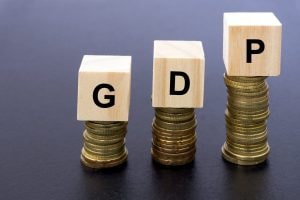
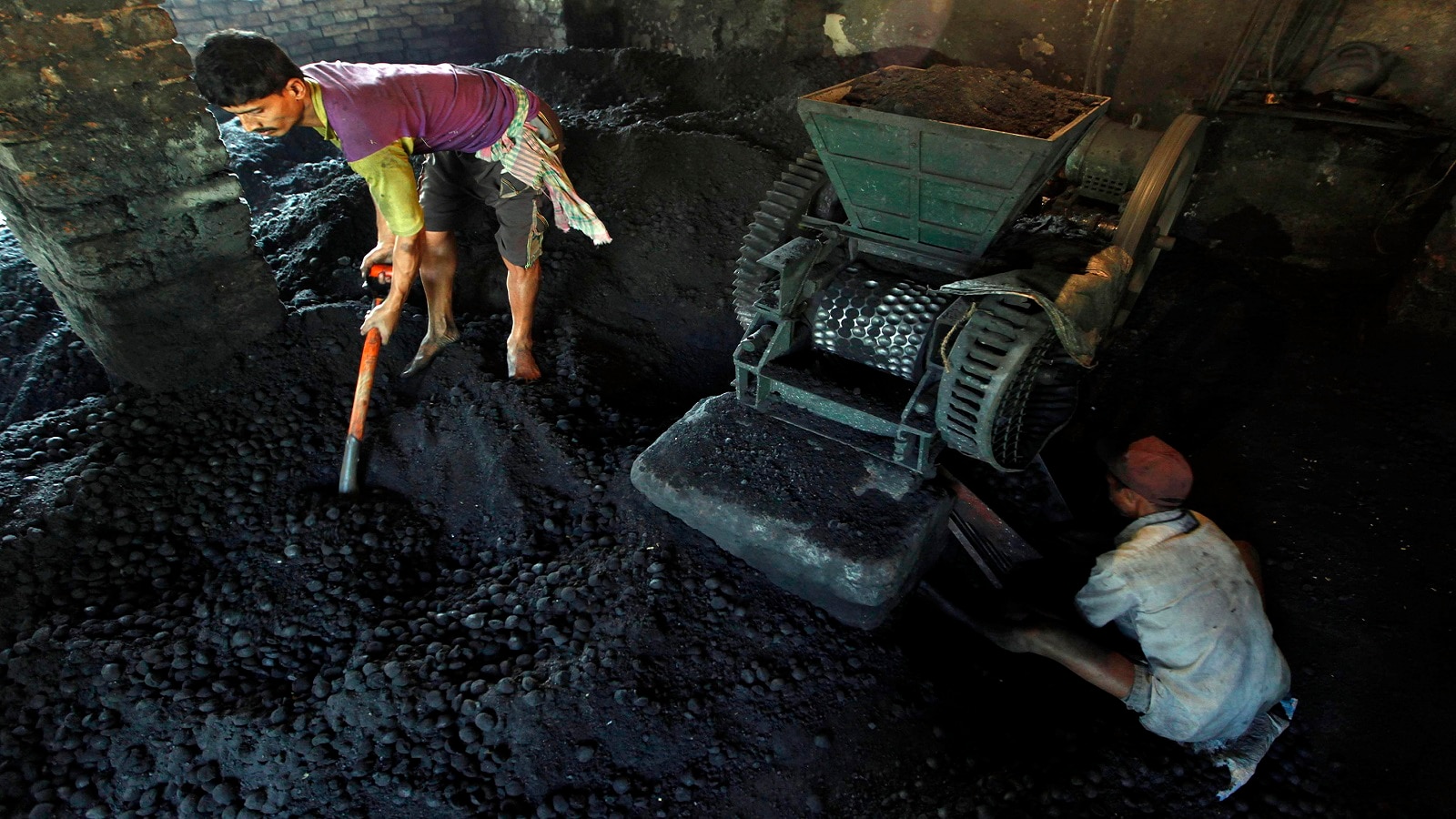
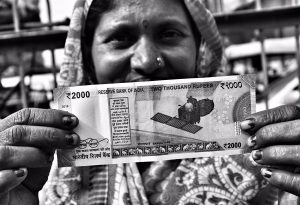
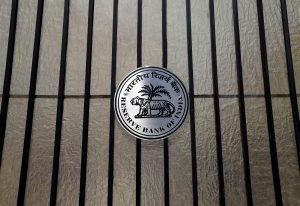





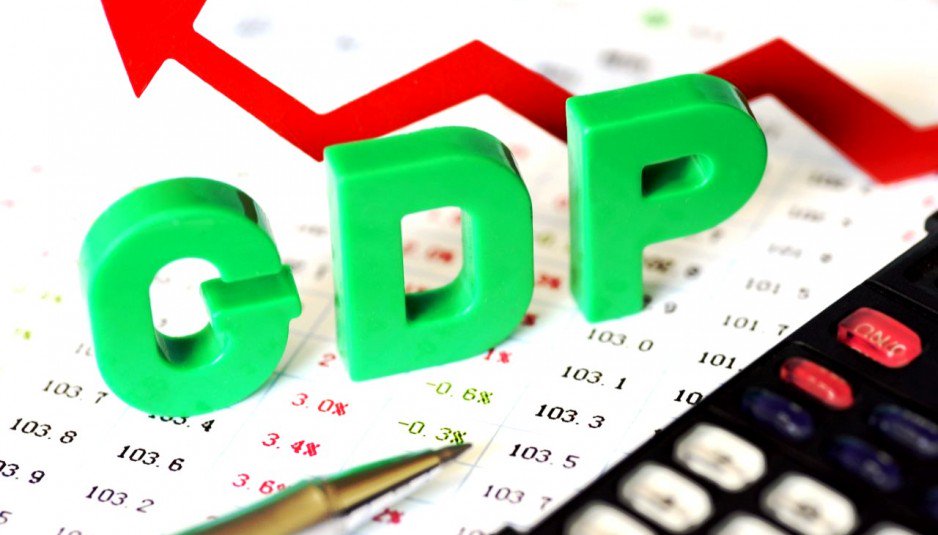
Recent Comments